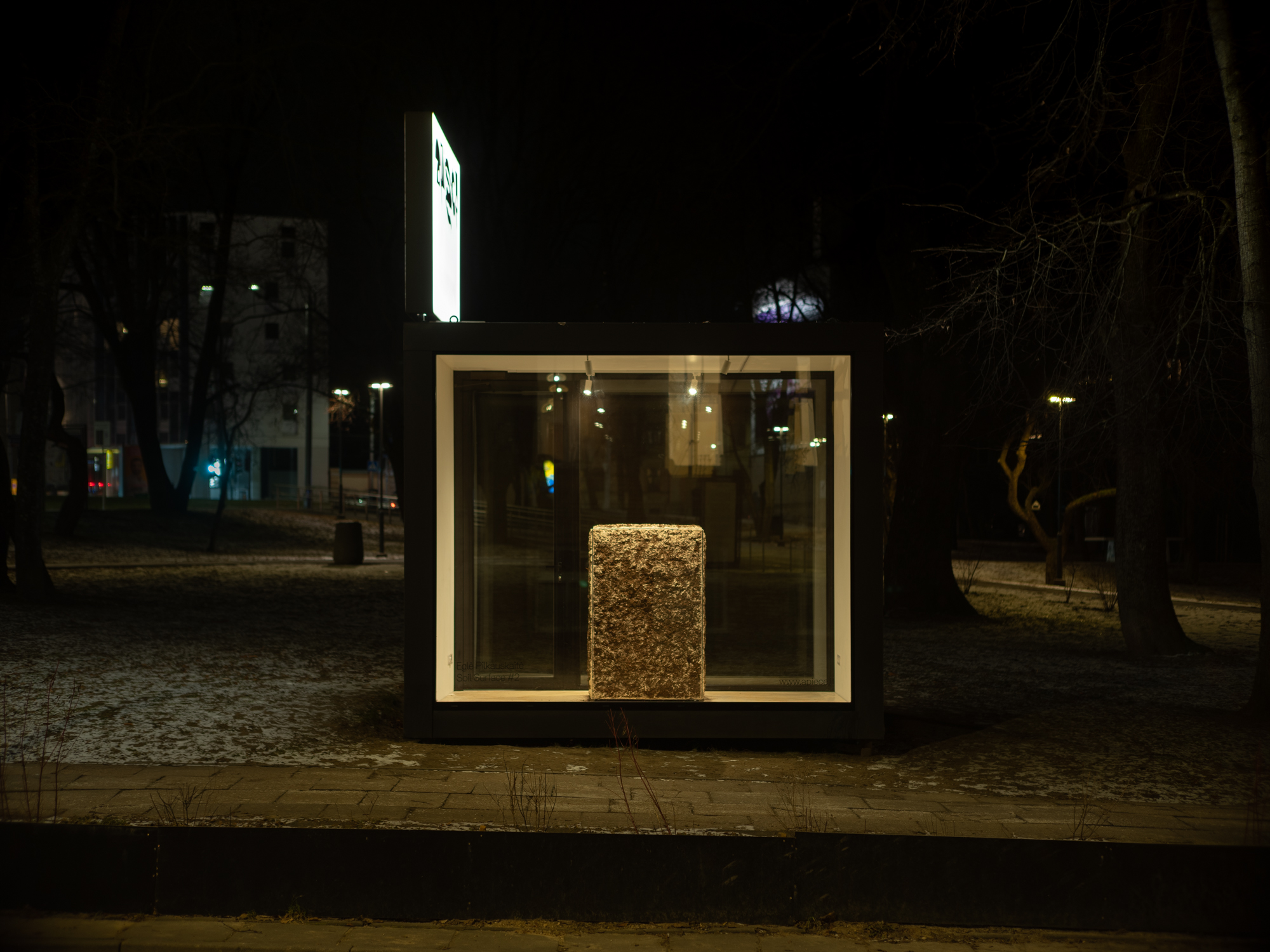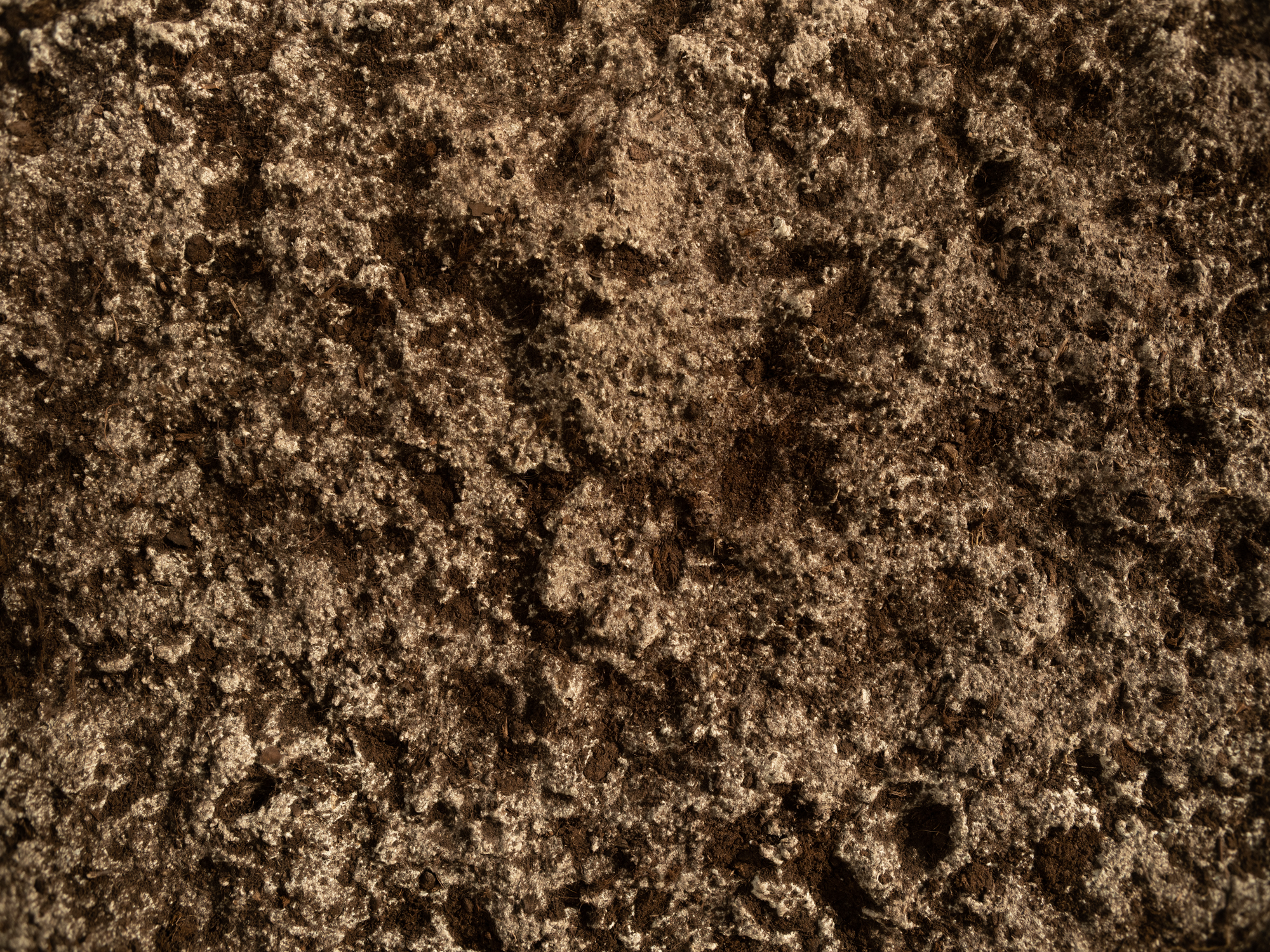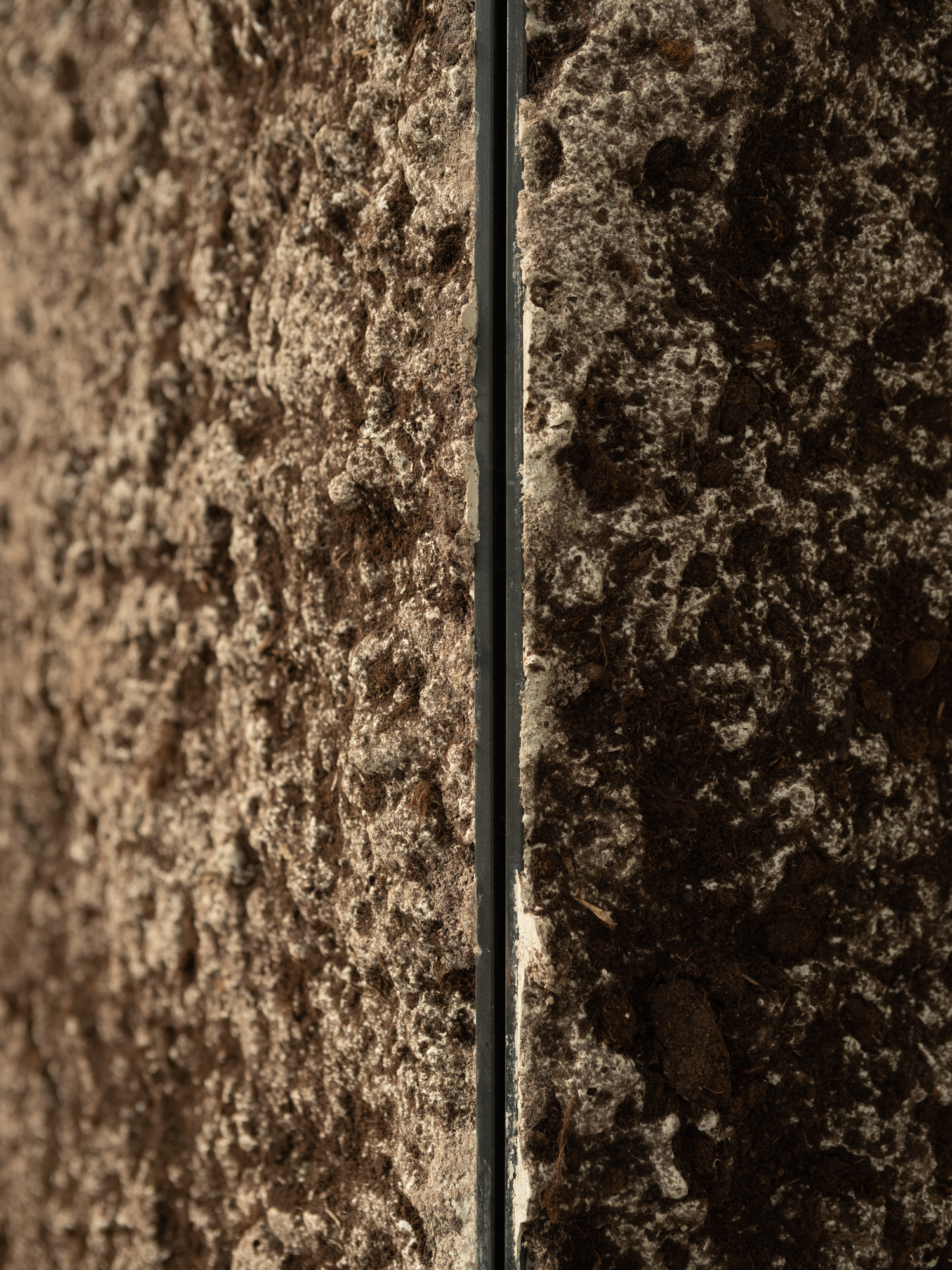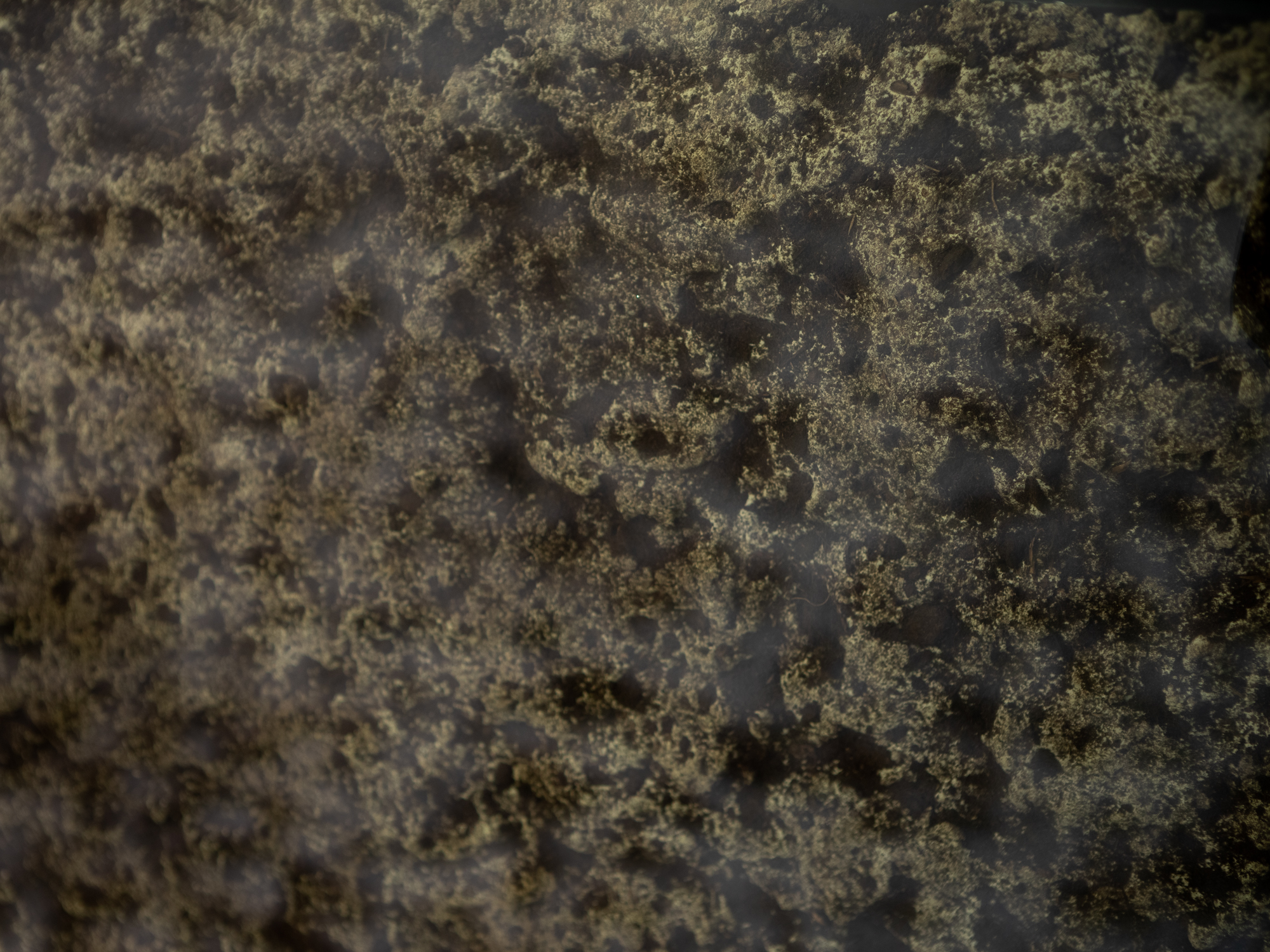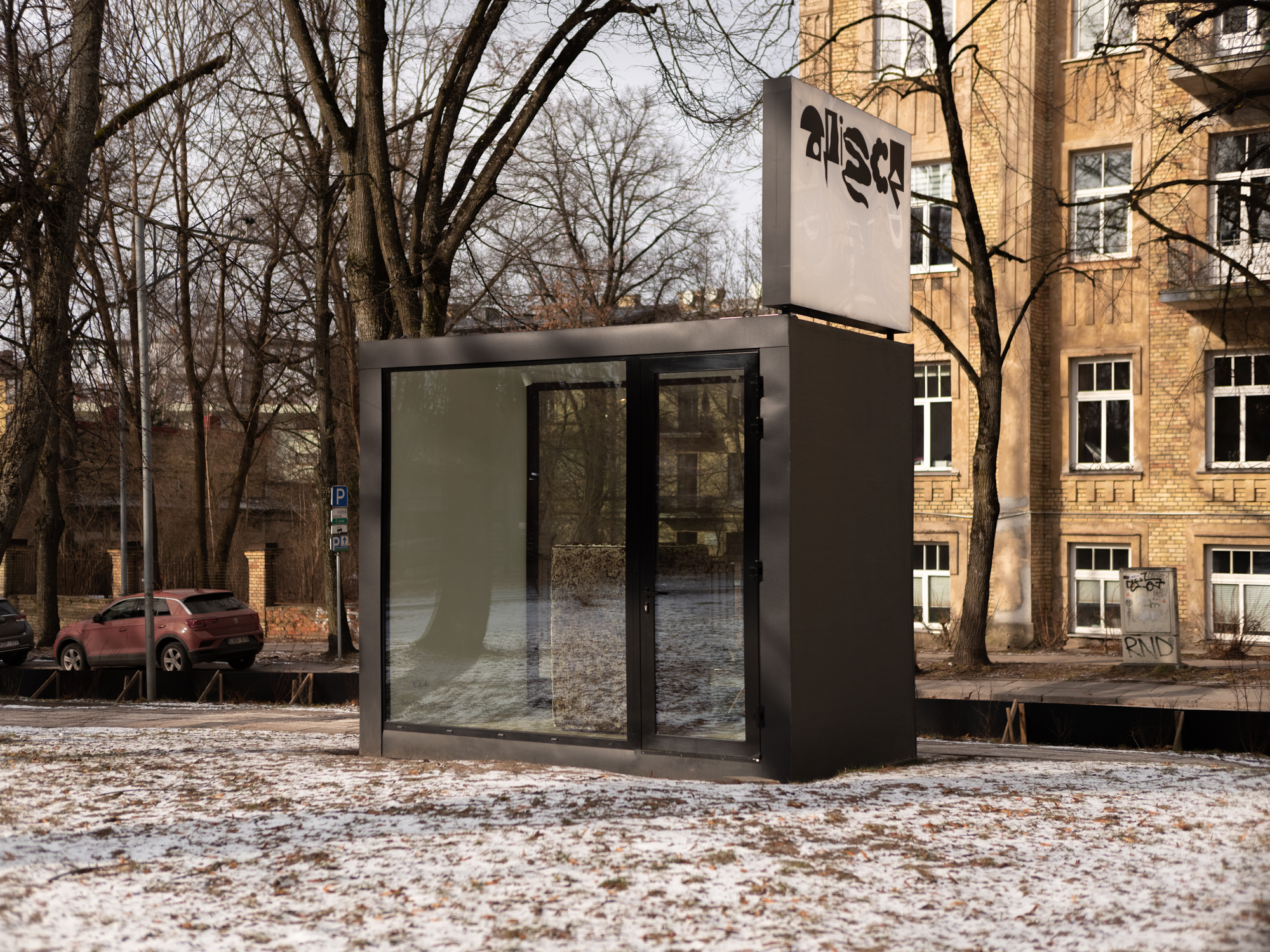Eglė Pilkauskaitė’s single artwork exhibition “Soil Surface #2”.
On February 19, E. Pilkauskaitė’s exhibition opens at “apiece”, a showcase-style gallery strategically focusing on autonomic artistic expression. Artist’s work attaches great importance to the surrounding environment and to places affected by processes of exclusion and decay. Materiality also plays an important role in her work. These are craft-oriented materials, adapted using various technologies and methodologies, including researches into different textures and use of textures in which they are not imitated but rather reflected upon.
“Soil Surface”, exhibited at “apiece” gallery, is a new version of the work, in which the imprint of the soil is cast in concrete slabs. According to the artist, it aims to make sense of the value of (the) “earth” being turned into an exhibit, and of the issues relating to the Anthropocene, all the while highlighting the importance of man’s physical relationship with nature.
– Eglė, was the choice of material affected to the showcase-like space of the gallery or was it motivated by other reasons? Also, what do you think is the relationship of contemporary (urban) person to nature (specifically to earth), and why is it important for you to make sense of it in your work?
– The idea of the work does relate to the location of the gallery. It is located in a little park in a rather busy area, marking a stretch of Čiurlionis street, leading to the city’s largest park, Vingis Park. The object displayed at the gallery becomes a kind of boundary marker between the industrial and recreational spaces of the city. The casting of a direct earth imprint in concrete creates a deliberately misleading allusion to the surface of the now fashionable organic material. The human relationship with the earth tends to remain consumerist, from the cultivation of exotic plants at home to large-scale building projects. Concrete has become the second most consumed material in the world after water. For this work I have chosen a form that can become a kind of pedestal for the contemporary search for a balance between man and nature.
– In your work, you often make use of objects found in various places to convey the beauty of decay. You have previously indicated that you are interested in questioning social norms of beauty and aesthetics. Why is it important for you to balance the line between beautiful and ugly in your work?
– I’m interested in why something is attractive to one person and not to another. The process that determines our aesthetic choices is extremely interesting. I try to look at aesthetics through a social perspective.
Eglė Pilkauskaitė lives and works in Vilnius. She graduated from Camberwell College of Arts, University of the Arts London in 2014 with a BA in Drawing. Since 2016 she has been actively participating in exhibitions and art projects in Lithuania and abroad.
Exhibition curators: Milena Černiakaitė and Aušra Trakšelytė
Communication: Menų Komunikacija
Graphic design: Marek Voida
Exhibition partly funded by Vilnius City Municipality
Exhibition open from February 19 to March 31 2023
Exhibition can be viewed 24/7
More about artist: www.pilkauskaite.com


